The Merlion is a mythical creature that serves as the national symbol of Singapore. The creature has the head of a lion and the body of a fish. The Merlion statues can be found in several locations in the city.
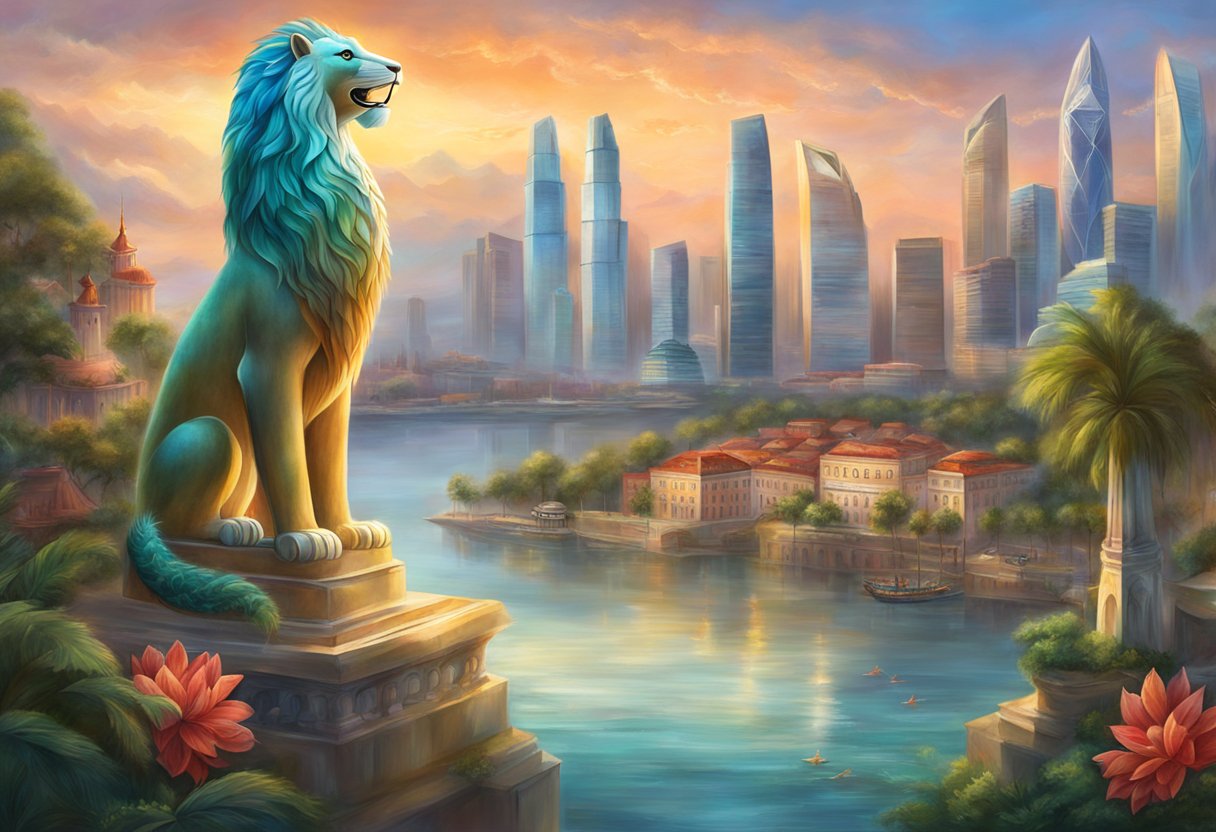
According to the search results, the Merlion was first used in Singapore as the logo for the tourism board. Its name combines “mer”, meaning the sea, and “lion”. The fish body represents Singapore’s origin as a fishing village when it was called Temasek, which means “sea town” in Javanese. The Merlion was designed by Fraser Brunner in 1964 as an emblem for the Singapore Tourism Board, adding a fish tail to the statue to signify Singapore’s humble beginnings as a fishing village.
The Merlion’s trademark was registered on 20 July 1966 and the logo was used for 33 years up till 1997. The Merlion is not only a symbol of Singapore but also a popular tourist attraction. The Merlion is a significant part of Singapore’s history and culture, and its story is worth exploring.
Origins of the Merlion Legend
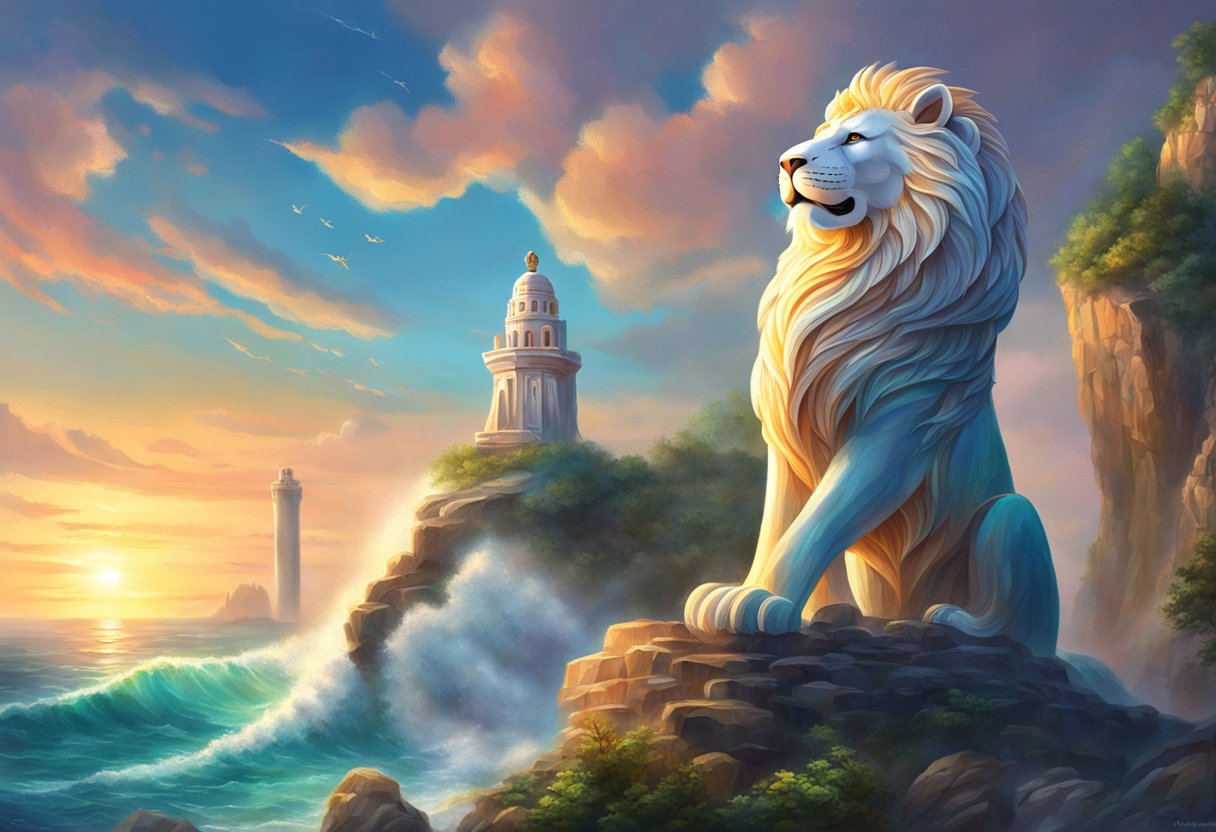
Cultural Roots
The Merlion is a mythical creature that is deeply rooted in Singaporean culture. The fish body represents Singapore’s origin as a fishing village when it was called Temasek, which means “sea town” in Javanese. The lion head, on the other hand, is a nod to the city-state’s original name, Singapura, which means “lion city” in Malay.
First Recorded Accounts
The legend of the Merlion can be traced back to the 13th century, when a Sumatran prince named Sang Nila Utama discovered the island of Singapore. According to legend, he saw a strange creature that resembled a lion swimming in the water. This sighting was taken as a good omen, and Sang Nila Utama decided to name the island Singapura, or “lion city” in Malay.
The first recorded accounts of the Merlion as we know it today date back to the 1960s, when it was created as the corporate logo for the Singapore Tourist Promotion Board (STPB). The Merlion’s trademark was registered on July 20, 1966, and the logo was used for 33 years up till 1997. Since then, the Merlion has become an iconic symbol of Singapore and a must-visit tourist attraction.
Physical Description of the Merlion
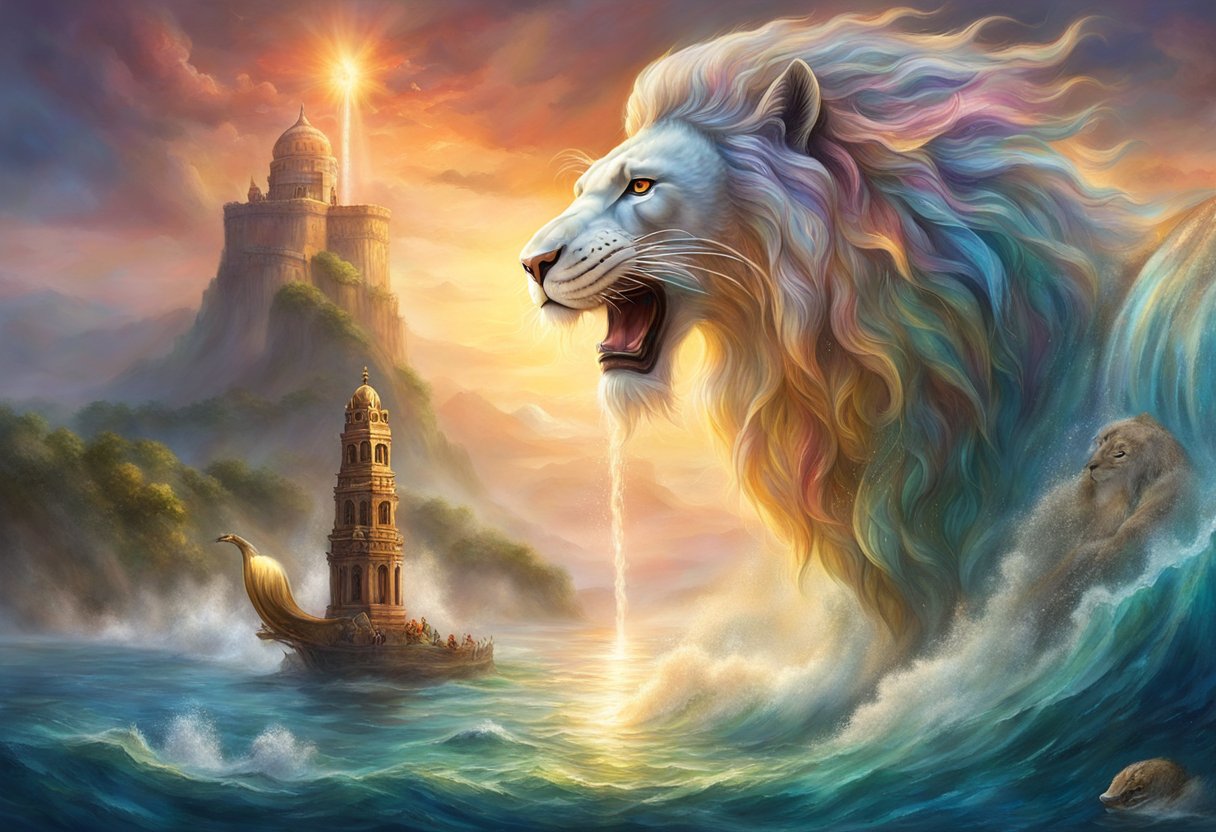
General Appearance
The Merlion is a mythical creature that has a lion’s head and a fish’s body. It stands at 8.6 meters tall and weighs 70 tons. The statue of the Merlion is a popular tourist attraction in Singapore and is located near the entrance of the Singapore River. The statue was designed by then-vice-chancellor of the National University of Singapore, Kwan Sai Keong, and crafted by local sculptor Lim Nang Seng in 1972.
Symbolic Features
The Merlion’s name is a combination of “mer,” meaning the sea, and “lion.” The fish body represents Singapore’s origin as a fishing village when it was called Temasek, which means “sea town” in Javanese. The lion’s head refers to the sighting of a lion in Temasek by Sang Nila Utama, a Malay prince who sailed across the seas before discovering the fishing island. The Merlion is also said to reflect the legend of Sang Nila Utama.
The Merlion is an important symbol of Singapore’s history and culture. It has become an iconic landmark that represents Singapore’s identity as a vibrant and dynamic city-state. The Merlion is also a popular souvenir item that tourists can purchase to commemorate their visit to Singapore.
Merlion in Singaporean Culture
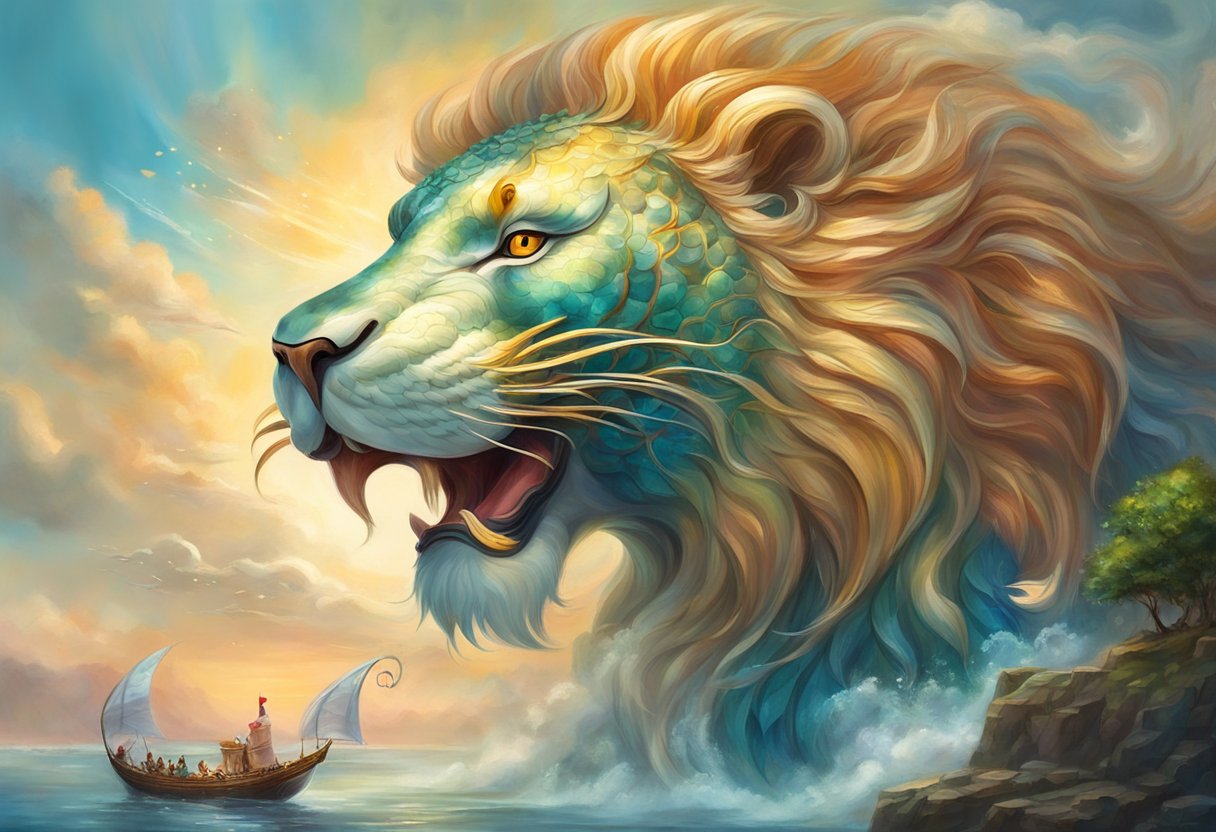
National Symbolism
The Merlion is a significant national symbol in Singaporean culture, representing the country’s history and identity. The creature’s lion head symbolizes the island’s original name, Singapura, which means “Lion City” in Malay. The fish body represents Singapore’s origins as a fishing village, known as Temasek, which means “sea town” in Javanese.
The Merlion has been officially recognized as a national icon since 1964, and its image can be found on various official documents, currency, and government buildings. The creature is also featured in many cultural events and festivals, including the National Day Parade.
Tourism and Iconography
The Merlion is also an important symbol in Singapore’s tourism industry, attracting millions of visitors each year. The creature is featured in various souvenirs, such as keychains, postcards, and t-shirts, and has become an iconic representation of Singapore’s culture and identity.
The Merlion Park, located near the Central Business District, is a popular tourist destination where visitors can take photos with the famous statue of the creature. The park also offers a stunning view of the Marina Bay Sands and the Singapore Flyer, making it a must-visit spot for tourists.
In conclusion, the Merlion is an important symbol in Singapore’s culture and identity, representing the country’s history and origins. It has become an iconic representation of Singapore’s tourism industry, attracting millions of visitors each year.
Representations in Art and Media
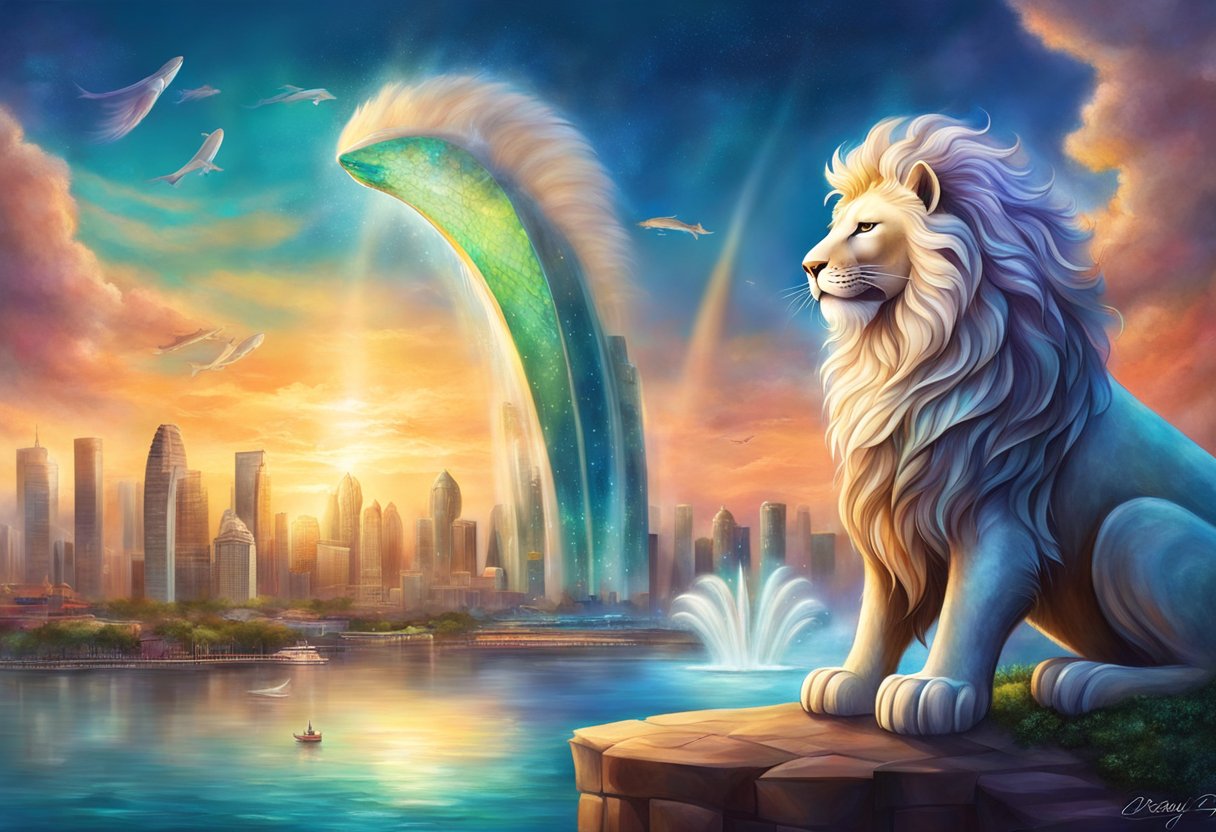
Statues and Sculptures
The Merlion is a popular subject for statues and sculptures. The most famous Merlion statue is located at Merlion Park in Singapore, standing at 8.6 meters tall and weighing 70 tonnes. There are also smaller Merlion statues located throughout Singapore, as well as in other countries such as Japan and South Korea. These statues are often used as tourist attractions and as symbols of Singapore.
Merlion in Literature and Film
The Merlion has also made appearances in literature and film. In the children’s book “The Merlion and the Hibiscus”, the Merlion is depicted as a guardian of Singapore. The Merlion has also been featured in films such as “Crazy Rich Asians” and “Saint Jack”. In these films, the Merlion is used as a symbol of Singapore’s culture and identity.
Overall, the Merlion has become an iconic symbol of Singapore and has been featured in various forms of art and media.
Mythological Significance
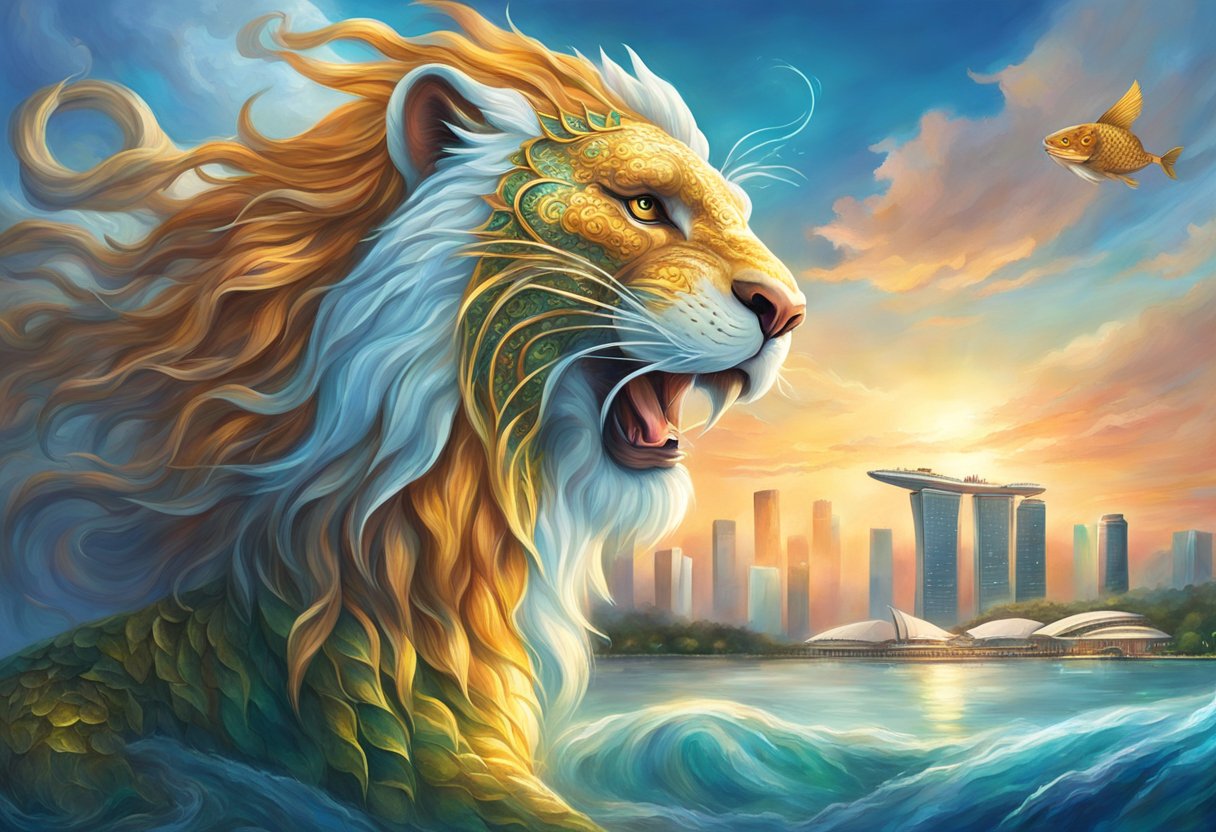
Comparative Mythology
Merlion, a mythical creature with the head of a lion and the body of a fish, has a significant role in the mythology of Singapore. However, the concept of a creature with the head of a lion and body of a fish is not unique to Singaporean mythology. Similar creatures can be found in other cultures around the world, such as the Egyptian god, Sobek, and the Greek god, Triton.
Modern Interpretations
The Merlion has become an iconic symbol of Singapore, representing the country’s history and culture. The fish body of the creature represents Singapore’s origin as a fishing village, while the lion head is a nod to Singapore’s early name, Singapura, which is Malay for “lion city”. The Merlion has been used as a logo by the Singapore Tourism Board since the 1960s, and it has become a popular tourist attraction.
In recent years, the Merlion has been reinterpreted in various ways, with artists and designers creating their own versions of the creature. Some have even used the Merlion as a symbol of Singapore’s multiculturalism, incorporating elements from different cultures into their designs. Overall, the Merlion continues to be a significant and beloved symbol of Singaporean culture.
Conservation of the Myth
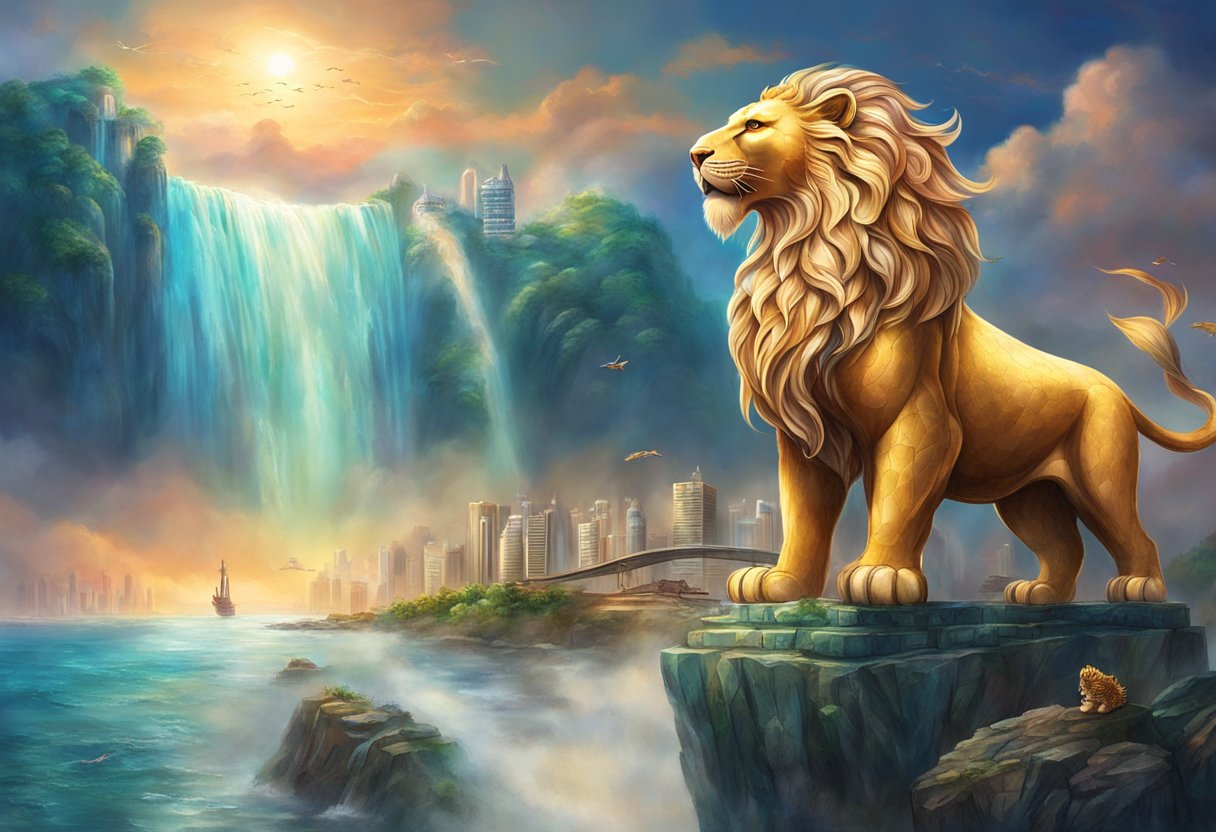
Educational Efforts
Efforts have been made to educate the public on the history and significance of the Merlion. The Merlion is a symbol of Singapore’s heritage and culture, and it is important to preserve this aspect of the country’s history. Educational materials, such as books and videos, have been created to teach people about the Merlion and its history.
Cultural Preservation
The Merlion is an important part of Singapore’s culture and heritage, and it is important to preserve it for future generations. The government has taken steps to preserve the Merlion, including designating the Merlion Park as a conservation area. The park is home to two Merlion statues, one of which is 8.6 meters tall and weighs 70 tons.
In addition to the park, the Merlion is also featured on various souvenirs and products. By promoting the Merlion as a cultural icon, the government hopes to preserve its significance for future generations.
